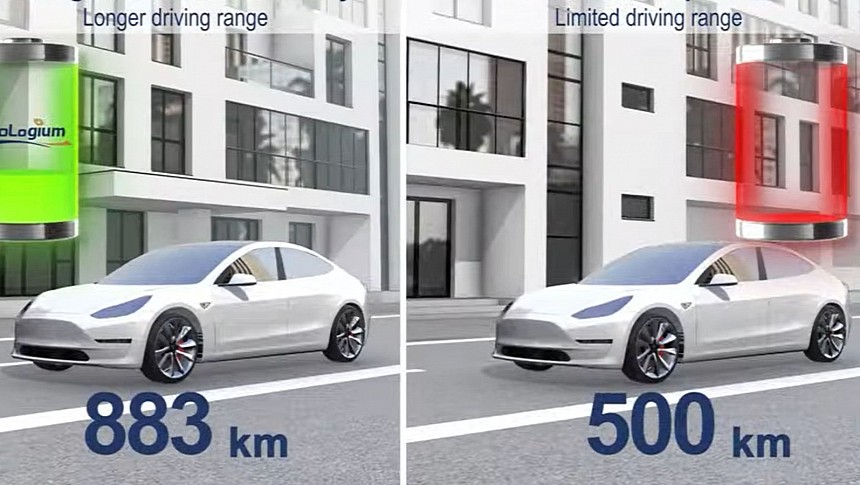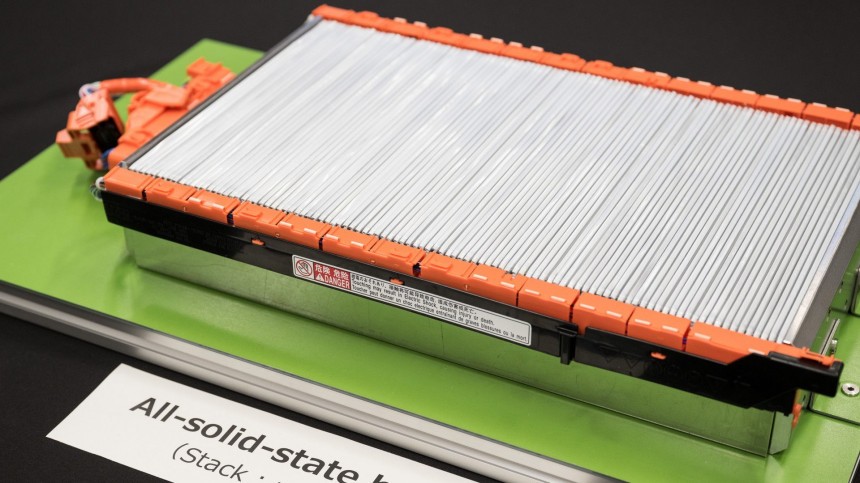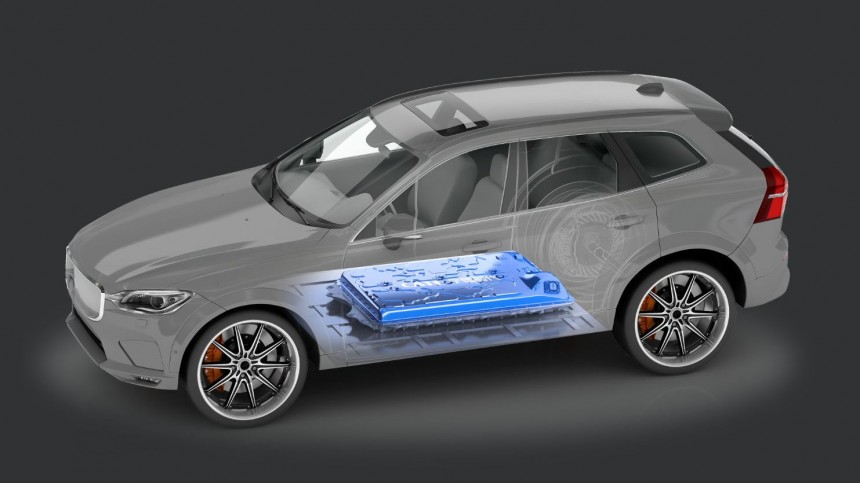The three pillars of "I don't want no damn electric car!" are price, range, and charging. Current lithium-ion technology has evolved a lot, but the milestone it reached is far from making EVs real contenders for ICEVs. At least, this is what popular wisdom states. And many companies in the oil & gas industry and car industry support this idea.
EVs partly solve the price pillar in some categories, but really affordable electric cars are still wishful thinking. That's because only some people compare apples to apples. For instance, many out there will tell you that the cheapest electric Tesla Model 3 (with a base price of around $40,000) is much more expensive than the cheapest ICE Toyota Corolla (which starts at some $22,000).
Even if you are eligible for the tax credit, and the cheapest Model 3's price comes down to some $32-33,000, it still costs ten grand more than the well-known Japanese. It doesn't matter if Tesla's car is no match for Corolla in terms of performance and equipment; the numbers have spoken, and there you are. Did I mention those people that conveniently put in the balance a used internal combustion car and a new electric car? Yep, popular "wisdom" for sure.
However, the second and third pillars are very sensitive topics for EV proponents. You simply can't convince an ordinary driver to switch from a very psychological-comfortable-to-use internal combustion engine car to an electric car with not enough range and long charging times, plus the scarce charging infrastructure. You can forget about ICE pollution and climate change arguments; most people are not scared by these. Yet. And you'll end up being struck by the "battery pollution" and "EVs' related pollution" hammers.
But you also are aware that the vast majority of the drivers don't give a damn about these technical details. They only know the car has four wheels, a steering wheel, and the pedals; it needs gasoline or diesel and some maintenance, and that's about it.
People don't really care what's under the bonnet, but they care if the car is expensive to run, or if it can get them from point A to point B with no hassles, or if the interior space is more than enough no matter how long or short the next trip might be. For most drivers out there, the technology propelling the car is of no importance as long they can travel those 400-500 miles between refueling/recharging and don't have to wait too long to refill/recharge the tank/battery.
Well, this is the super batteries promise: to match conventional cars' benefits in terms of range and refueling convenience. At some point, they will probably deal with the price discrepancy also. But for now, let's agree not to call them "super" because it's an embarrassing marketing trick and creates high expectations. How about "solid-state", because it sounds technical but not complicated, it's easy to remember, and it's got two "s" from "super", right?
For those of you who were dormant in the past decade or so, the usual lithium-ion battery basically consists of two electrodes separated by a liquid electrolyte allowing electrons to pass through it, thus creating energy for the electric motor to propel the EV. A solid-state battery's main difference is replacing the liquid electrolyte with a solid one. And just like magic, you've got double the range and charging times ten times shorter.
Of course, things are much, much more complicated than that. But this is the next big step in battery tech. Unfortunately, as I explained at the beginning of 2023, solid-state batteries are not around the corner. The industry's realistic expectations are to deploy large-scale commercially viable technology around the end of this decade.
Well, ladies and gents, in June, the not-too-long-ago anti-EV Toyota jumped on the EV bandwagon with a very bold EV strategy, stating it will soon bring 600 miles-range battery electric cars to the market. I doubt it will be an affordable electric Corolla… But still, the credit goes to Elon Musk, who finally "converted" the Toyota behemoth's reluctance.
Then, at the beginning of July, the same Toyota made some waves stating that the company is working hard on a solid-state battery capable of up to 745 miles (1,200 km) range and only 10 minutes charging time. This battery should go into production starting in 2027.
That's only 5 years after Toyota's embarrassing recall of its first mass-production EV-only model, the bZ4X, because of the risk of the wheels falling off. Actually, this year some 1,000 units of its sibling Subaru Solterra have been the subject of a re-recall on the same subject! Double the embarrassment, right?
I'm sorry for my reluctance. It's hard to believe it's only a coincidence that Toyota just came upon a battery breakthrough in the midst of a focus shift forced by shareholders. I want this to be true, but I also know that solid-state battery promises hit major problems, like dendrites formation. More, solid-state technology evolution didn't occur overnight. It required a very long time, many experiments, and a lot of money.
Nevertheless,solid-state semi-solid-state batteries already lift off
Do you know the difference between full hybrid and mild hybrid? The latter is more of a marketing gimmick, as the little battery and the dwarf electric motor give a slight helping hand to the ICE in order to reduce emissions by a fraction. In fact, there's a big technological difference between the two solutions. But, you know, they both are "hybrid", so the mild hybrid cars can be labeled more climate-friendly.
It's almost the same with the solid-state and semi-solid-state batteries. At the end of 2022, QuantumScape (an American start-up backed by Volkswagen) sent prototypes of its Li-metal solid-state battery cells to a number of automotive companies. In the following years, QuantumScape will develop subsequent generations of prototypes. So, a performant solid-state battery with a proper ceramic-based solid electrolyte will be production ready, most likely at the end of this decade.
At CES 2023, Factorial (another American start-up backed by Stellantins, Mercedes-Benz, and Hyundai) unveiled an impressive 100 Ah solid-state battery. It was the first to receive the UN 38.3 safety certification for a Li-metal solid-state battery in May. There is a catch, though: it features a polymer-based solid electrolyte, which is actually semi-solid. In other words, this is an evolved Li-metal battery (with up to 50% higher density), but it's not the kind of solid-state type the QuantumScape is developing.
In April, at Auto Shanghai 2023, Chinese CATL, the biggest battery manufacturer in the world, announced its proprietary "condensed battery", with an impressive energy density of up to 500 Wh/kg. While it's marketed as a solid-state battery, it actually uses a polymer gel-like electrolyte. So, this is another semi-solid-state battery, and CATL intends to mass-produce it starting sometime at the end of this year.
NIO is a Chinese EV manufacturer known for its swap-battery station network. It looks like it's ready to offer its customers a new solid-state battery option starting this summer. The 150 kWh battery pack is supplied by its partner WeLion and promises up to 40% more energy density than the current 100 kWh Li-ion battery. Of course, NIO "forgot" to mention that this is a semi-solid-state battery with a hybrid electrolyte.
Hidden under the "semi" particle – which, as you can see, is sometimes "forgotten" from the context. It's the same as with the "mild" particle in mild-hybrid, which sometimes (in fact, more often lately) is omitted from many models' designation because hybrid on its own is more trendy. Just like "electrified" can easily be misinterpreted as "electric", so people tend to ignore that there is an internal combustion engine in the context…
There's nothing wrong with a semi-solid-state intermediate solution, but I fear omitting the "semi" could do more damage in the long run. "Solid-state" syntagm creates high expectations in the mind of consumers and investors. But semi-solid-state technology is just an improvement of current battery technology. A pretty big improvement, I might say, but definitely not a game-changing one.
I always say the devil is in the details. Not using the "semi" term may seem like a harmless detail. But not living up to customer expectations – when the industry emphasizes the big advantages of solid-state batteries over conventional ones – it seems like a very bad marketing plan. Or simply dumb ignorance.
Even if you are eligible for the tax credit, and the cheapest Model 3's price comes down to some $32-33,000, it still costs ten grand more than the well-known Japanese. It doesn't matter if Tesla's car is no match for Corolla in terms of performance and equipment; the numbers have spoken, and there you are. Did I mention those people that conveniently put in the balance a used internal combustion car and a new electric car? Yep, popular "wisdom" for sure.
However, the second and third pillars are very sensitive topics for EV proponents. You simply can't convince an ordinary driver to switch from a very psychological-comfortable-to-use internal combustion engine car to an electric car with not enough range and long charging times, plus the scarce charging infrastructure. You can forget about ICE pollution and climate change arguments; most people are not scared by these. Yet. And you'll end up being struck by the "battery pollution" and "EVs' related pollution" hammers.
Maybe teasing some sort of super-batteries helps change the mind
I know many of you reading this piece know pretty much about engines, how they work, and what they are made of. Maybe you know much about transmission, power, and torque. Of course, there are those who know a thing or two (or more) about electric motors and batteries and charging and inverters and so on.But you also are aware that the vast majority of the drivers don't give a damn about these technical details. They only know the car has four wheels, a steering wheel, and the pedals; it needs gasoline or diesel and some maintenance, and that's about it.
Well, this is the super batteries promise: to match conventional cars' benefits in terms of range and refueling convenience. At some point, they will probably deal with the price discrepancy also. But for now, let's agree not to call them "super" because it's an embarrassing marketing trick and creates high expectations. How about "solid-state", because it sounds technical but not complicated, it's easy to remember, and it's got two "s" from "super", right?
For those of you who were dormant in the past decade or so, the usual lithium-ion battery basically consists of two electrodes separated by a liquid electrolyte allowing electrons to pass through it, thus creating energy for the electric motor to propel the EV. A solid-state battery's main difference is replacing the liquid electrolyte with a solid one. And just like magic, you've got double the range and charging times ten times shorter.
Of course, things are much, much more complicated than that. But this is the next big step in battery tech. Unfortunately, as I explained at the beginning of 2023, solid-state batteries are not around the corner. The industry's realistic expectations are to deploy large-scale commercially viable technology around the end of this decade.
So, how are things half a year later?
I must say I'm surprised, but not about the forecast, as it stayed mostly the same. It's about who decided to make some waves in the solid-state batteries sector. Yes, ladies and gentlemen, history has its hard-to-predict twists. Do you remember which major car company promoted hydrogen aggressively and considered the EV batteries bulsh*t?Well, ladies and gents, in June, the not-too-long-ago anti-EV Toyota jumped on the EV bandwagon with a very bold EV strategy, stating it will soon bring 600 miles-range battery electric cars to the market. I doubt it will be an affordable electric Corolla… But still, the credit goes to Elon Musk, who finally "converted" the Toyota behemoth's reluctance.
Then, at the beginning of July, the same Toyota made some waves stating that the company is working hard on a solid-state battery capable of up to 745 miles (1,200 km) range and only 10 minutes charging time. This battery should go into production starting in 2027.
I'm sorry for my reluctance. It's hard to believe it's only a coincidence that Toyota just came upon a battery breakthrough in the midst of a focus shift forced by shareholders. I want this to be true, but I also know that solid-state battery promises hit major problems, like dendrites formation. More, solid-state technology evolution didn't occur overnight. It required a very long time, many experiments, and a lot of money.
Nevertheless,
Do you know the difference between full hybrid and mild hybrid? The latter is more of a marketing gimmick, as the little battery and the dwarf electric motor give a slight helping hand to the ICE in order to reduce emissions by a fraction. In fact, there's a big technological difference between the two solutions. But, you know, they both are "hybrid", so the mild hybrid cars can be labeled more climate-friendly.
It's almost the same with the solid-state and semi-solid-state batteries. At the end of 2022, QuantumScape (an American start-up backed by Volkswagen) sent prototypes of its Li-metal solid-state battery cells to a number of automotive companies. In the following years, QuantumScape will develop subsequent generations of prototypes. So, a performant solid-state battery with a proper ceramic-based solid electrolyte will be production ready, most likely at the end of this decade.
At CES 2023, Factorial (another American start-up backed by Stellantins, Mercedes-Benz, and Hyundai) unveiled an impressive 100 Ah solid-state battery. It was the first to receive the UN 38.3 safety certification for a Li-metal solid-state battery in May. There is a catch, though: it features a polymer-based solid electrolyte, which is actually semi-solid. In other words, this is an evolved Li-metal battery (with up to 50% higher density), but it's not the kind of solid-state type the QuantumScape is developing.
In April, at Auto Shanghai 2023, Chinese CATL, the biggest battery manufacturer in the world, announced its proprietary "condensed battery", with an impressive energy density of up to 500 Wh/kg. While it's marketed as a solid-state battery, it actually uses a polymer gel-like electrolyte. So, this is another semi-solid-state battery, and CATL intends to mass-produce it starting sometime at the end of this year.
As always, a sword has two edges
These are just a few examples of how important the "solid-state" syntagm has become, thanks to its huge promises compared to current lithium-ion technology: at least double the range and half the price for virtually the same size. Unfortunately, there's not going to be a fast technological leap but a more or less smooth transition.Hidden under the "semi" particle – which, as you can see, is sometimes "forgotten" from the context. It's the same as with the "mild" particle in mild-hybrid, which sometimes (in fact, more often lately) is omitted from many models' designation because hybrid on its own is more trendy. Just like "electrified" can easily be misinterpreted as "electric", so people tend to ignore that there is an internal combustion engine in the context…
There's nothing wrong with a semi-solid-state intermediate solution, but I fear omitting the "semi" could do more damage in the long run. "Solid-state" syntagm creates high expectations in the mind of consumers and investors. But semi-solid-state technology is just an improvement of current battery technology. A pretty big improvement, I might say, but definitely not a game-changing one.
I always say the devil is in the details. Not using the "semi" term may seem like a harmless detail. But not living up to customer expectations – when the industry emphasizes the big advantages of solid-state batteries over conventional ones – it seems like a very bad marketing plan. Or simply dumb ignorance.









